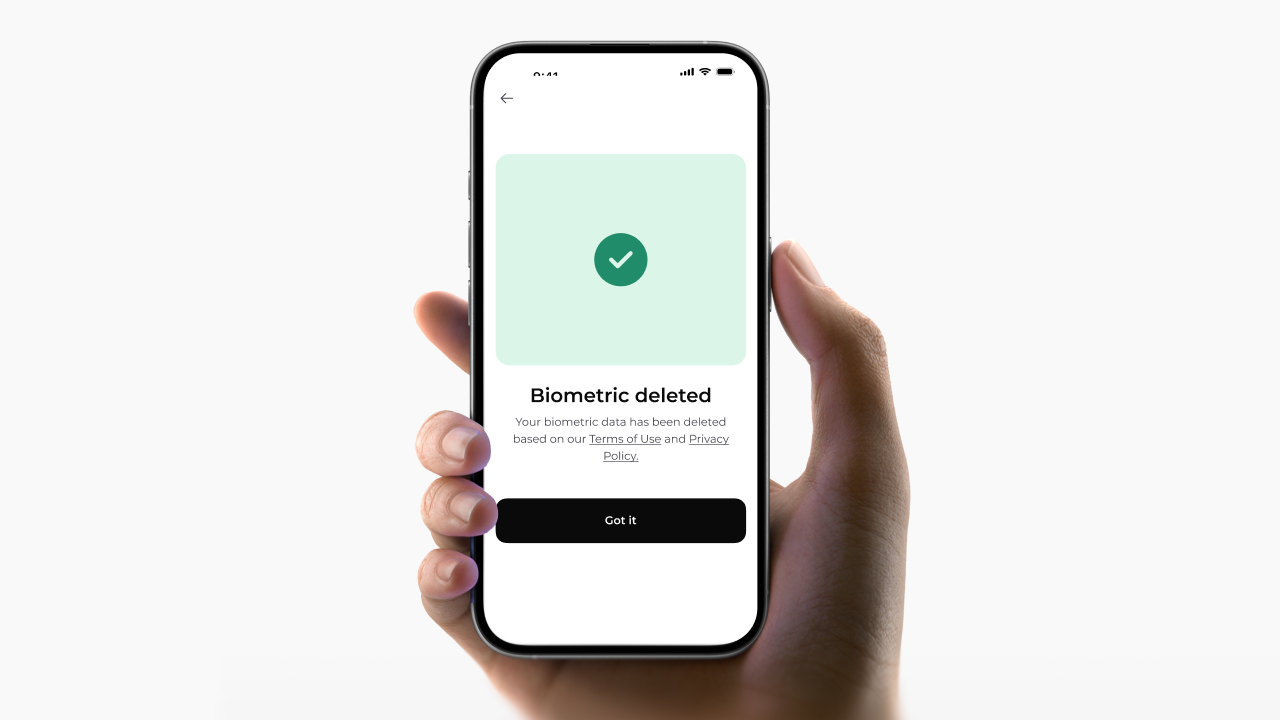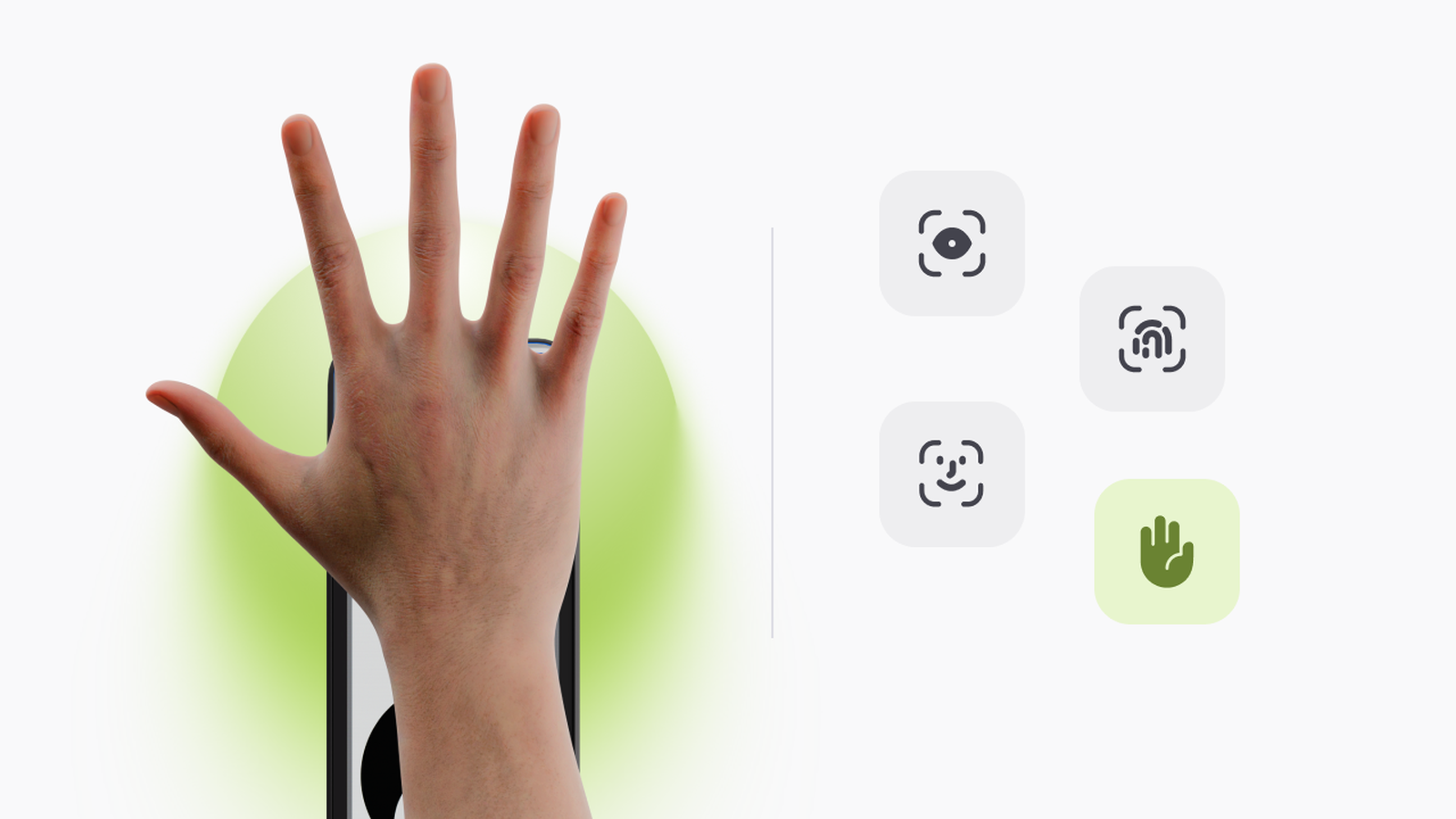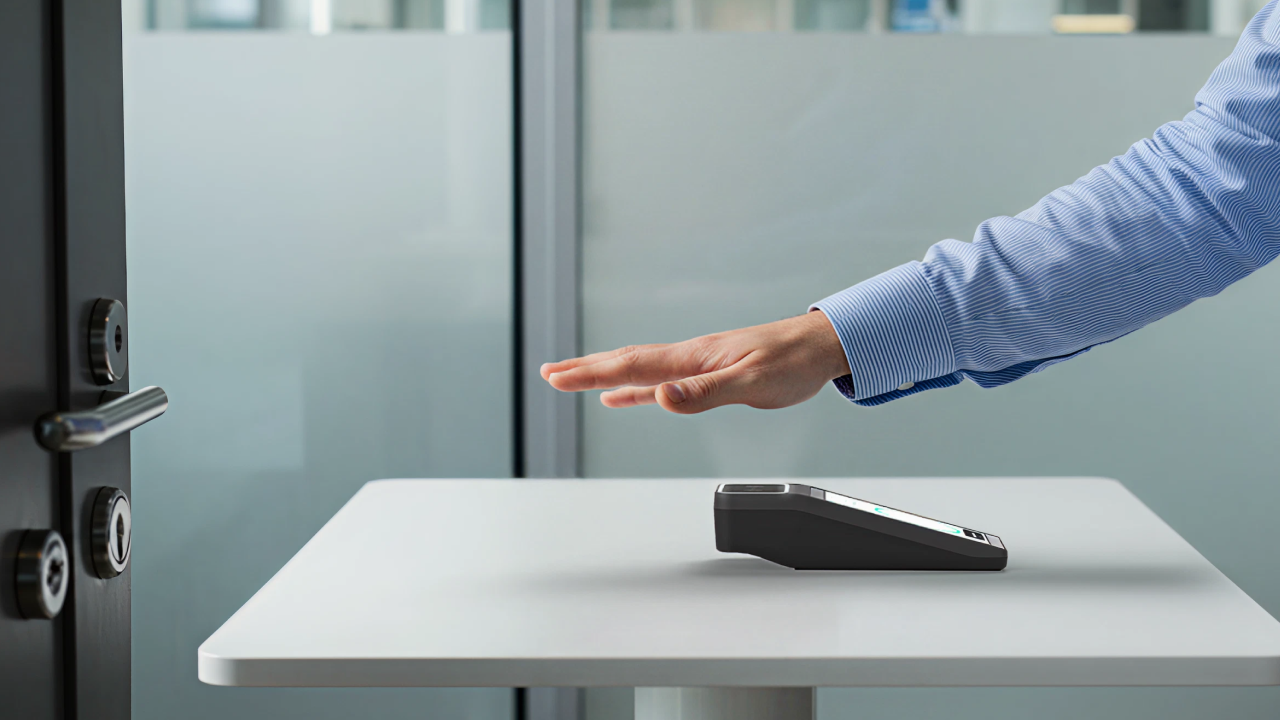What is biometric authentication?
Biometric authentication is a security process that verifies a person’s identity using unique biological traits. Instead of remembering passwords or carrying access cards, users can confirm their identity with something they are—like a fingerprint, iris, voice, face, or palm.
As digital transformation accelerates across industries, biometric authentication is becoming a go-to method for access control, financial transactions, and identity verification. It's fast, user-friendly, and difficult to spoof—making it a critical layer of defense in an increasingly passwordless world.
Fraud is on the rise — and passwords aren’t enough
Digital fraud is growing at an alarming pace. According to recent reports, identity fraud losses in the U.S. alone reached over $43 billion in 2023, driven by phishing attacks, credential stuffing, and account takeovers. As businesses expand their digital footprint, bad actors are evolving just as quickly—exploiting weak or reused passwords, social engineering, and outdated verification methods.
Traditional authentication methods like passwords, PINs, and security questions were never designed for today’s threat landscape. They’re easily guessed, stolen, or phished—and once compromised, they open the door to costly breaches.
Biometric authentication offers a critical layer of defense. Unlike passwords or devices that can be lost or shared, biometrics are tied directly to the individual. They’re nearly impossible to forge, and far harder to compromise at scale. When implemented correctly—with strong encryption, spoof detection, and privacy safeguards—biometric ID becomes a powerful tool to prevent:
Account takeover and credential fraud
Payment fraud and chargebacks
Insider threats in sensitive environments
Unauthorized physical and digital access
Types of biometric authentication
There are several types of biometric identifiers in use today. Each method has its own strengths and limitations:
Fingerprint scanning: One of the earliest and most widely adopted forms of biometrics. It’s convenient but vulnerable to wear-and-tear or spoofing.
Facial recognition: Popular in smartphones and surveillance. While accessible, it can struggle with accuracy in varying lighting or for diverse populations.
Iris/retina scanning: Highly accurate, but considered intrusive and expensive to deploy at scale.
Voice recognition: Useful in phone-based systems but susceptible to background noise and impersonation attacks.
Palm recognition: A newer but fast-growing approach that uses the unique patterns of veins and ridges inside the palm for contactless, high-accuracy authentication.
Why are palm biometrics gaining momentum
While most biometric systems rely on surface-level features, palm recognition goes beneath the skin. By using infrared imaging to capture subdermal vein patterns—features invisible to the naked eye—palm biometrics offer a powerful blend of security, hygiene, and ease-of-use.
Here’s what sets palm authentication apart:
Contactless by design: Unlike fingerprint scanners or PIN pads, palm systems allow users to hover their hand above a sensor—ideal for high-traffic or health-conscious environments.
Highly accurate: Keyo’s palm ID system maps millions of points on a user's palm print and palm vein. The dual authentication method and internal vein structure of the palm are nearly impossible to replicate, resulting in a lower false acceptance rate compared to many other biometric types. Palm vein technology is the market leader in accuracy, with false acceptance rates as low as 0.00008%
Inclusive and accessible: Palm recognition works across a wide range of skin tones, ages, and conditions, without requiring physical touch or precise positioning. It even works in medical facilities where staff and patients are wearing gloves.
Privacy-forward: Modern palm systems can anonymize and encrypt data, aligning with GDPR and global privacy standards. No biometric images are stored—only secure, irreversible mathematical templates.
Use cases: From payments to patient ID
Biometric authentication is already transforming sectors like banking, retail, healthcare, and enterprise access. And palm recognition is increasingly at the center of that shift:
Retail & payments: Customers can pay with a simple wave of the hand—no wallet, no phone, no friction.
Healthcare: Patients can be identified instantly without needing ID cards or sharing sensitive information aloud.
Workforce management: Employees can clock in securely and hygienically, even in high-volume shift environments.
Travel & hospitality: Contactless identity checks streamline the journey while enhancing security.
Addressing privacy concerns with biometric authentication

For all its convenience and security benefits, biometric authentication raises an important question: What happens to your data? Unlike a password you can change, biometric traits are permanent—so it’s natural for users to be cautious.
Questions like:
“Who stores my biometric data?”
“Can it be hacked or stolen?”
“What if I want it deleted?”
…are not just valid—they’re essential to address.
The good news is that modern palm recognition systems are being built from the ground up to respect privacy, consent, and control.
Here's how:
No raw biometric images are stored. Palm systems don’t retain photos or scans of your hand. Instead, they convert the internal patterns (like veins and ridges) into a mathematical template that’s meaningless to anyone else.
Data is transformed into irreversible encrypted vectors. These templates are one-way encrypted, meaning they can’t be reverse-engineered—even if accessed. It’s similar to how passwords are hashed, but with even more safeguards in place.
Secure elements protect data at the hardware level.On advanced systems like the Keyo Wave+, biometric data is processed and cryptographically sealed inside a hardware-secure element that’s tamper-proof and keeps your identity locked down, even from the device itself.
Built to meet global privacy standards. Compliant with regulations like GDPR, CCPA, and other international data protection frameworks, palm biometrics offer organizations a way to modernize authentication without compromising user trust.
In short, privacy doesn’t have to be the tradeoff for better security. With the right approach, biometric authentication—especially palm-based systems—can offer both.
Top myths about biometric authentication (and the truth behind them)
Biometric authentication is growing fast—but so are the myths and misunderstandings surrounding it. Let’s break down some of the most common concerns and separate fact from fiction.
Myth #1: "If someone steals my biometric, I'm doomed."
Reality: This fear stems from the idea that your biometric trait (like a fingerprint or palm vein) is stored as an image that can be copied. But modern biometric systems don’t store raw data. They convert your biometric into a one-way encrypted mathematical template that’s useless if stolen—and can’t be reverse-engineered.
In palm systems, this template is further protected by hardware-level encryption using secure elements, making it far more secure than a password or even a credit card number.
Myth #2: "Biometrics invade my privacy."
Reality: Biometric systems don’t have to track, store, or share your identity. In fact, many systems are designed to protect it. The best solutions don’t store personally identifiable information (PII), and the biometric template is anonymized, encrypted, and only used for verification—not surveillance.
Privacy-first platforms like palm biometrics are often GDPR- and CCPA-compliant by design, giving users control over when and where they’re identified.
Myth #3: "Biometrics are biased and don't work for everyone."
Reality: Some biometric methods—like facial recognition—have been shown to exhibit bias based on skin tone, gender, or age. But not all biometrics are created equal.
Palm recognition is one of the most inclusive modalities. It captures the internal vein structure of the hand, which isn't affected by surface features, lighting, or demographics. That makes it more consistent and accessible across diverse populations.
How can my business get started with biometric authentication?
Whether you're a small business or a large enterprise, Keyo makes it simple to deploy. Use our full-stack platform—or integrate our matching software into your existing hardware.
Reach out to us at hello@keyo.com to learn more.

 Beyond hardware: Why you should be vetting your biometric provider’s software
Beyond hardware: Why you should be vetting your biometric provider’s software Biometric time cards with palm technology: Here’s what businesses should know
Biometric time cards with palm technology: Here’s what businesses should know Biometric Wallets vs. Mobile Wallets: Why Palm Recognition Is the Future of Payments
Biometric Wallets vs. Mobile Wallets: Why Palm Recognition Is the Future of Payments